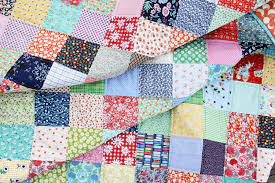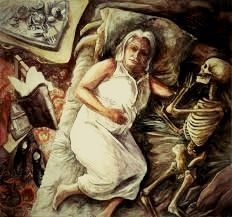Everyday Use- Marxist Theory
The Trouble with Everyday Use
March 17, 2024
Think of that blanket that lays upon your bed, the one you grab first to crawl under every evening before you go to sleep. Now, imagine that blanket you use everyday, strung up on a wall for decoration rather than the purpose in which it was intended--- to keep you warm each night as you drift away. When considering whether Dee or Maggie was unappreciative of the hand sewn quilts, one needs to consider whether or not the classism these two were bombarded with from their time was at play with their emotions about how they see themselves and their values as parts of society. Did the class the two resided in make the two view the value of the quilt different than the value of the quilt as a generational gift? Well...
Some people pass down quilts as family heirlooms (G&Z Foundation). In the case of Maggie and Dee, the quilts were to hopefully be passed down as just that, but to Dee it became more about denouncing the industries making quilts rather than embracing and appreciating a piece of family history. When taken into consideration, a conclusion can be made about the true appreciation for such a fine piece of art. When Dee was trying to explain to Maggie that she "can’t appreciate these quilts!” she said. “She’d probably be backward enough to put them to everyday use" (Walker). Dee wants to use the pieces as art to show she has appreciation for her culture, whereas Maggie wants to use them for the intended purpose her culture allows her to make them for. However, in the times these two women were struggling to keep their cultural identity in, the quilts offered a sense of security for what they knew to be who they were--- strong and independent like each stitch in the quilt.
By the time this story was set to take place, the sewing machine had begun it's take over years prior.Some women found power in the change from hand stitching to being able to have a helping hand in completing their quilts,"By the late 19th century, quilters were using sewing machines to speed up their work, if only when adding borders, often from store-bought fabric” (Postrel). Embracing this new machine was a way for women to finish their projects faster, and more efficiently. For some women, this was a new sense of power, of freedom. However, for Dee, it was an insult to her ancestors and her culture. She didn’t want anything that wasn’t done by hand, she didn’t want anything that couldn’t show the hard work put into a piece meant to last and show a piece of history.
In the words of some others, "rather, the conservative parts of America that fear economic growth" have stunted the minds of some people to make them believe change is going against who they are as a whole (Delong). In the case of Maggie and Dee, we can clearly see the classism they face in their time is what Dee fears will result in her culture being taken away or diminished because of how the world around her sees it, but most importantly the value she set for herself based on the appreciation for her class. Throughout the short story, it can be shown that Dee fears the loss of her culture that she was raised on, but it was only a culture she recently accepted and began to appreciate. When her mother talked about her before, it was "Dee wanted nice things", and it was things that made her fit in, such as a "yellow organdy dress" or black heels--- she wanted people to see her as more than the class she grew up in, so much so that "she was determined to stare down any disaster in her efforts" (Walker). This shows that she did not want classism to take over her life when she was growing up, but now more than anything wanted the class in which people of her culture resided in to be her entire identity.
Throughout the short story, we can clearly depict there is an issue with classism, from the simple lifestyle Maggie and mom live to Dee always wanting more, it is clear that the class they reside in has an effect on how each of them view life. The reader can take away that while some are happy with their means, their traditions and where they stand in society— there will always be one that is not satisfied with where they are. Sadly, there’s nothing that can be done to change that. In conclusion, in the short story, Everyday Use by Alice Walker, classism relating to the Marxist theory is in use.
Works Cited:
Creative, E. (2020). The history of quilting. The Zubeum - A virtual museum of art. https://www.zubeum.org/the-history-of-quilting
Delong, B. (2018). Book review of capitalism in America: A history by Alan Greenspan ... Entrepreneurs: the eccentric — sometimes cruel — heroes of American capitalism. https://www.washingtonpost.com/outlook/entrepreneurs-the-eccentric--sometimes-cruel--heroes-of-american-capitalism/2018/11/16/6f35c3ac-d099-11e8-b2d2-f397227b43f0_story.html
Postrel, V. (2017). Love That Handmade Quilt? Think Capitalism.
Walker, A. (2006). Everyday use. Rutgers University Press.




Comments
Post a Comment